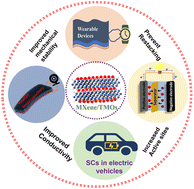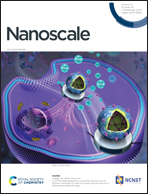Heterostructures of MXenes and transition metal oxides for supercapacitors: an overview
Abstract
MXenes are a large family of two dimensional (2D) materials with high conductivity, redox activity and compositional diversity that have become front-runners in the materials world for a diverse range of energy storage applications. High-performing supercapacitors require electrode materials with high charge storage capabilities, excellent electrical conductivity for fast electron transfer, and the ability of fast charging/discharging with good cyclability. While MXenes show many of these properties, their energy storage capability is limited by a narrow electrochemically stable potential window due to irreversible oxidation under anodic potentials. Although transition metal oxides (TMOs) are often high-capacity materials with high redox activity, their cyclability and poor rate performance are persistent challenges because of their dissolution in aqueous electrolytes and mediocre conductivity. Forming heterostructures of MXenes with TMOs and using hybrid electrodes is a feasible approach to simultaneously increase the charge storage capacity of MXenes and improve the cyclability and rate performance of oxides. MXenes could also act as conductive substrates for the growth of oxides, which could perform as spacers to stop the aggregation of MXene sheets during charging/discharging and help in improving the supercapacitor performance. Moreover, TMOs could increase the interfacial contact between MXene sheets and help in providing short-diffusion ion channels. Hence, MXene/TMO heterostructures are promising for energy storage. This review summarizes the most recent developments in MXene/oxide heterostructures for supercapacitors and highlights the roles of individual components.

- This article is part of the themed collections: Celebrating International Women’s day 2024: Women in Nanoscience and Recent Review Articles


 Please wait while we load your content...
Please wait while we load your content...